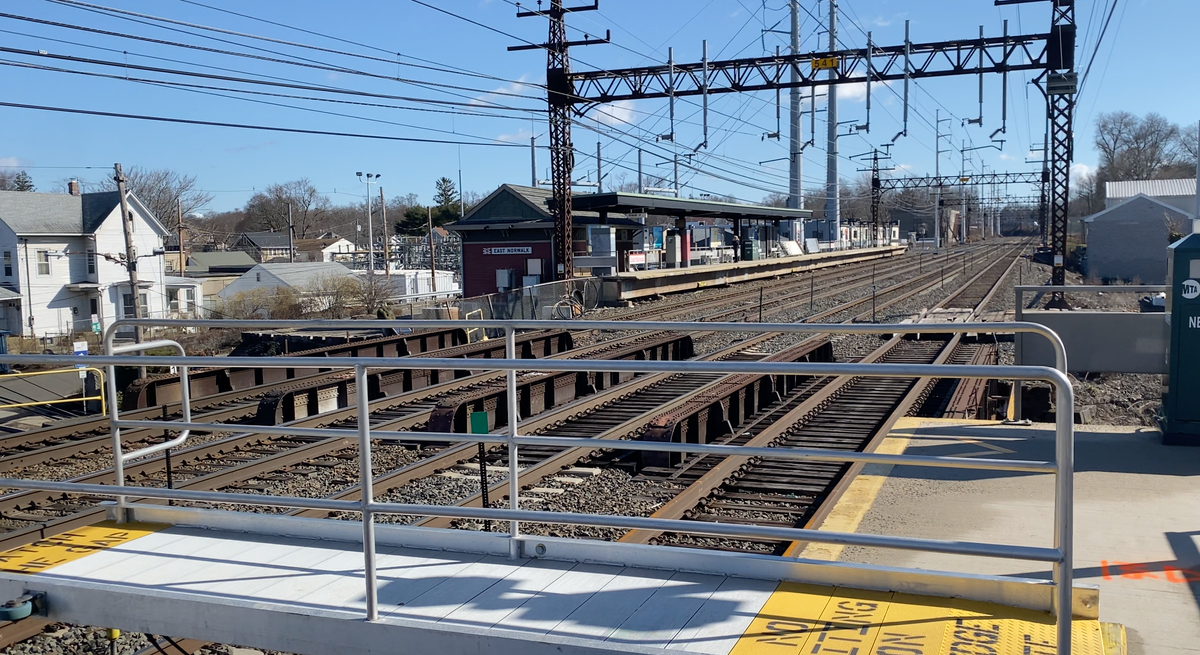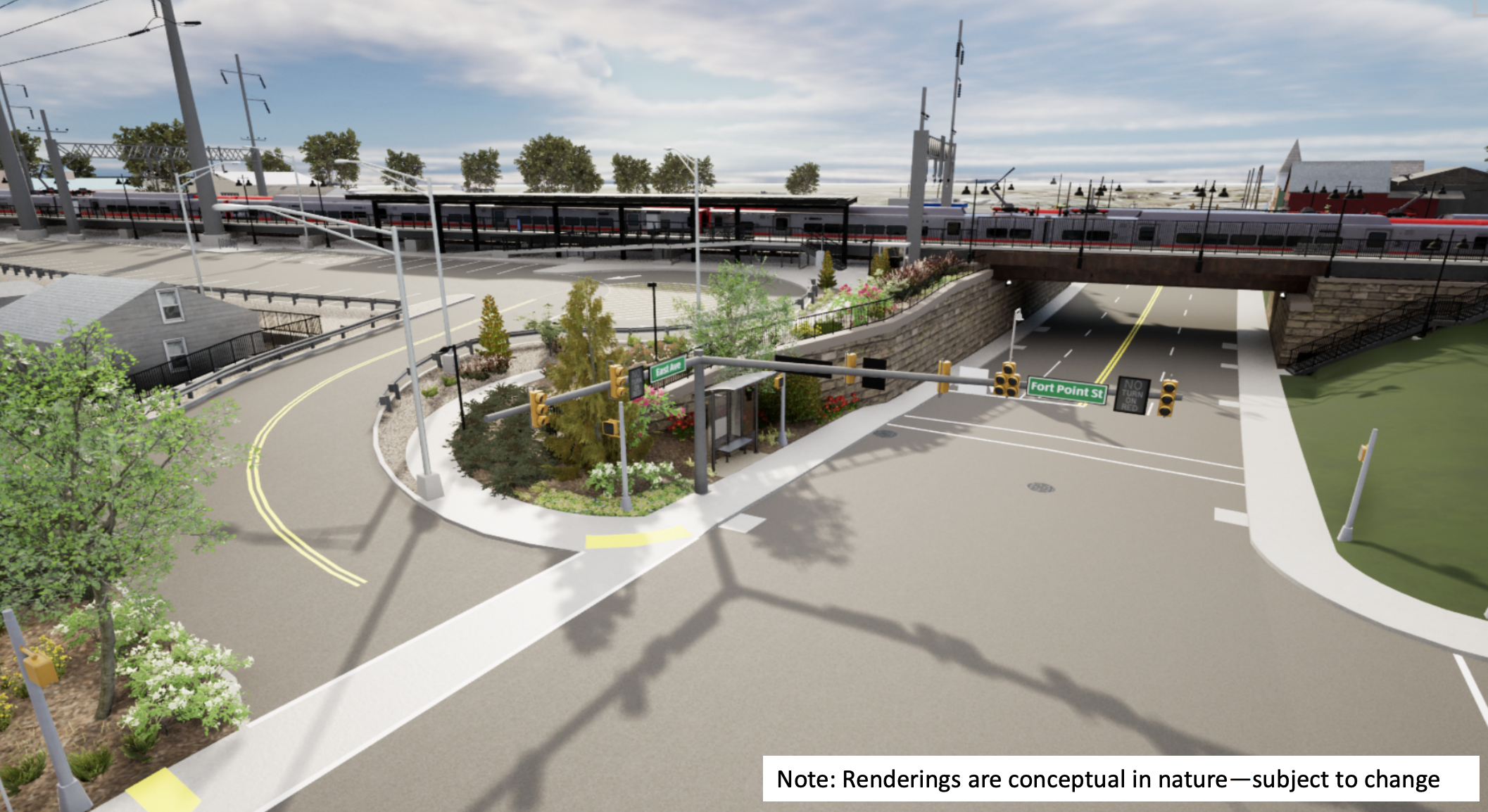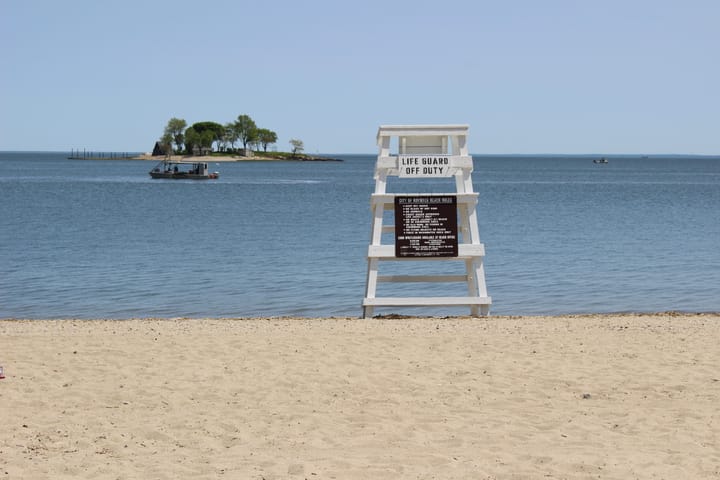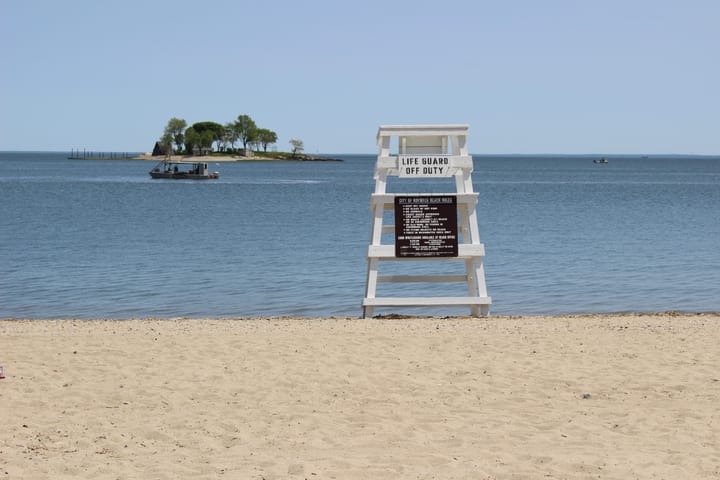All Aboard: In and Around the East Norwalk Station
The latest in our All Aboard series takes a look at the East Norwalk train station and the area around it.

East Norwalk’s train station is at the heart of plans at both the city and state level. The station itself is in the process of a makeover to better serve more residents and commuters. But the area around the station is also seeing more development and change—some of which is being welcomed as an improvement to the area, but some of which has current residents raising concerns about traffic and infrastructure in the area.
“There’s lots of stuff going on around the station,” Jim Travers, Norwalk’s director of Transportation, Mobility, and Parking told the Parking Authority in January, “For the people who live and work there, it’s been a long time so it’s good to see that the work’s starting.”
A Look Inside the East Norwalk Station
East Norwalk is located along the main New Haven line of Metro North, between South Norwalk and Westport and served by trains going to Grand Central and New Haven. The station is also a part of the Walk Bridge Replacement Project—a $1+ billion project that involves replacing the 122-year-old swing train bridge that spans the Norwalk River and connects South and East Norwalk, as well as multiple other bridge and road projects in the area.
Currently, the East Norwalk station allows for just four train cars to platform there—a typical train has about eight to 10 cars—and has some access issues. More than 700 people used the station each day, pre-pandemic, which a city study noted was “low compared to similar stations.”
As part of the overall Walk Bridge project, the state is upgrading the East Norwalk station. There will be new station platforms on both the north and southbound sides, as well as an upgraded parking lot and a traffic light at the end of the lot and Fort Point Street to allow better access in and out.
“The expansion of the New York-bound side parking is happening because the old station house comes down, but also they acquired the property that is opposite Fort Point Street, with the intention of relocating the driveway—not only make it easier for commuters to enter and exit, but also to provide some additional parking,” Travers said.

The goal of the project is to help increase ridership, according to city documents.
He also noted that there is also an agreement with developer Spinnaker, which owns the Brim and Crown property close to the station, to provide “a station place on both the New York and New Haven bound side,” that would be for the commuters in and out of the station.
The work on the station started in March, and has included two three-week closures for CTDOT to do underground infrastructure work as well as some construction on the northbound side of the station. During that time the Norwalk Transit District provided free shuttle service for commuters to get to the South Norwalk Train Station.
Andrew Lee, an engineer on the project, told the Parking Authority in January that the work on the northbound side should wrap up in 2025.
In late 2026, potentially early 2027, Lee said they’ll begin doing the same thing on the southbound side of the station. This work will also include at least two more three-week closures.
“In 2027 we will complete the south platform,” Lee said. “At that point everything is completed, we have an all new station, all new parking areas.”
Roadway Upgrades Near the Station
The state is also working with the city on related infrastructure improvements to roadways in the area, particularly East Avenue.
East Avenue is one of the busiest roadways in the city, serving as the “main corridor connecting I-95 to East Norwalk” and “is comprised of disjointed development and non-complementary uses, and uninspired site design and architecture,” according to a 2020 East Norwalk neighborhood plan.
“East Avenue at the highway ramps is the second highest crash rate we have in the city,” Travers told the Planning and Zoning Commission in January.
Both CTDOT and Norwalk’s Transportation, Mobility, and Parking team are working to address some of the existing roadway challenges in the area.
“Garrett [Bolella] and I worked with ConnDot on improvements to Cemetery Circle,” Travers told the Parking Authority in January. “They’re going to be working on new streetscape around the station—we’ll have all new streetscape, sidewalks on both sides, lanes that are indicative to the the speed we want to see, an introduction of bike lanes that go around there and get us up [from] Gregory [Street] to the station. [The project] terminates at Wilson, but there’s hope that we continue it further.”
Travers said work on those improvements will begin to get underway later this year.
In 2026, CTDOT expects work on East Avenue itself to begin, which will include a widening of the roadway, as well as a lowering of it to allow for larger vehicles like trucks to safely pass under the East Avenue train bridge. In addition, new crosswalks and sidewalks will be installed as well as new traffic signals at Fort Point Street, Fitch Street, and Myrtle.
According to the East Norwalk plan, “this project will likely have the most significant impact on improving traffic conditions in East Norwalk,” due to the fact that the new bridge will be taller, allowing trucks to stay on East Avenue, instead of detouring on residential streets. It will also widen the road to “provide much needed relief from the bottleneck condition that is currently caused by the two-way/single-lane configuration.”
The goal of the projects is to also help improve pedestrian connectivity in the area, particularly near the train station, with improved sidewalks and access.
Residents and members of the Transportation, Mobility, and Parking department, however, would like to see work on East Avenue expand further, particularly north of the station, up past I-95 to the Norwalk Green.
As a part of the last two capital budget cycles, the department has requested funds for an East Avenue Corridor study.
“This is for a comprehensive planning and design study, all the way from essentially I-95 to Cannon Street so it's a large geographic area,” Garrett Bolella, assistant director of Transportation, Mobility, and Parking, told the Planning and Zoning Commission in January during the capital budget request process. “There’s a tremendous amount of data that needs to be collected. This is to address all of the outstanding issues on East Avenue and look at how we can calm traffic and improve speeds on the roadway and operations.”
Bolella said the full study would cost $750,000. The department received $300,000 toward the study in 2023–2024, but its request for the remaining $450,000 did not get approved in this year’s capital budget.
“This is one where we’re saying we need a plan in order to get the funding [for design and construction work],” Travers said. “Once we get a plan in place the funding will be able to follow. It’s a massive project.”
Residents, however, have begun speaking out and calling on the city to help address the roadway’s challenges. In September, the Norwalk City Hall Neighborhood Association hosted an East Avenue Street Advocacy event with Mayor Harry Rilling and State Senator Bob Duff to call for “pedestrian safety, mobility, connectivity” in their community.
Other residents have also raised concerns about the impact lowering the roadway will have to facilitate truck traffic. This came in particular when the Planning and Zoning Commission approved a “transportation maintenance facility” in East Norwalk that is accessible primarily via East Avenue and Strawberry Hill Avenue.
“I really feel like with the bottom of my heart that I don’t think this is a good idea with these big tractor trailers,” resident Rita Paschalidis said. “This is the first time I’ve ever said anything [at a public meeting]. I love Norwalk, I love East Norwalk the most. I’m scared.”
Development Around the Station
In recent years, there has been some development around the train station including the Brim and Crown property, which brought 189 apartments and commercial businesses including Magic Pie pizza to the area. In addition, just a few blocks away, 25 Van Zant Street has become an “industrial hub” that aims to provide space for startups and small manufacturing.
But city officials have been looking to spur more activity in the area, particularly in the form of transit oriented development near the train station.
That’s why in 2020, the city adopted the East Norwalk Neighborhood Transit-Oriented Development plan that aimed to provide “a vision and path for the future of the East Norwalk Neighborhood based on its proximity to the commuter train station.”
“East Norwalk is an area suitable for transit-oriented development because of the central location of the East Norwalk Train Station, its desirability as a place to live, the number of recent projects in the area, both public and private, and the challenges in this area pertaining to traffic and parking,” the plan states.
The main portion of the plan focuses on an area that’s about a half a mile around the train station and includes East Avenue and other core streets, like Fitch, Fort Point, Van Zant, and Winfield. It created a new village district that allows developers to build an additional story in the area closest to the train station in an effort to spur development, while also requiring public amenities and ground floor “activation” or commercial uses.
The Planning and Zoning Commission recently approved 77 apartments at 1 Cemetery Street a few blocks away from the train station, as one of the first applications under the new plan, despite a lot of opposition from existing residents.
However, residents throughout the planning process raised concerns about the existing traffic and road conditions in the area, something acknowledged in the plan.
“East Avenue and Gregory Blvd. experience high traffic demand due to their proximity to the interstate. Together they serve as the primary route to and from Calf Pasture Beach,” the plan stated. “Community members have expressed great frustration at the congestion caused by these conditions. Other traffic-related challenges include speeding on Gregory Blvd. and Strawberry Hill Avenue, limited parking and parking enforcement near the train station, and substandard pedestrian amenities which require improvement.”
Residents said they were concerned that additional development would exacerbate these conditions—particularly if projects came online before some of the aforementioned infrastructure improvements took place.
“Every regulation in the EVT Zone was adamantly opposed by the community and the impact we feared most is coming to fruition,” Diane Cece, a leader with the East Norwalk Neighborhood Association, said during the hearings on the Cemetery Street proposal.
Resident Amanda Seroff said during those hearings that the city needed to address the traffic concerns now.
“But right now, with the congestion that’s happening down in East Norwalk and in Norwalk in general, because we keep building and building and building and thinking it’s not going to cause havoc in our community,” she said. “And then once it does go, ‘oh, well, it’s done. We’ll just have to deal with it.’ That’s why we’re here now. We’re trying to deal with it.”
However, city and elected officials said they were hoping to bring projects like this to East Norwalk to help support local businesses and revitalize some of the corridor.
Planning and Zoning Chair Lou Schulman said after voting in support of the project that “these regulations were intended to allow and encourage the possibility of development since it [didn’t] seem to be happening under what were the existing zoning regs.”



